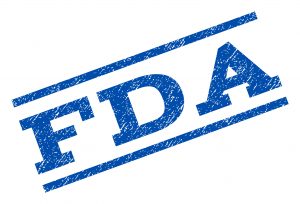FDA speeds up recall process – now posts on website as soon as recall occurs
Feb. 8, 2017 — San Diego, CA — U.S. consumers will now know when a medical device is recalled sooner than they had in the past.
The U.S. Food and Drug Administration announced Jan. 3 that it would start posting medical device recalls as soon as a company takes corrective action and notifies the federal agency. Before this announcement, the FDA waited to post medical device recalls until it had classified the recall as either class I, class II or class III.
It can sometimes take months from the time a device is recalled to the time it is classified and posted to the FDA website.

The FDA will continue to post recalls on its Medical Device Recalls Database, as well as the OpenFDA Device Recalls API. The new standard went into effect on Jan. 3.
What is a medical device recall?
Companies will initiate a recall if they learn there is a problem with their medical device. Companies can initiate one of two recalls: correction or removal.
A correction means the problems are addressed wherever the medical device is sold or used. A removal means the medical device is removed from wherever it is sold or used in order to address the problem.
Recalls occur when a medical device is defective or poses a risk to health.
The FDA notes that just because a medical device is recalled doesn’t mean a patient should necessarily stop using it. Some recalls simply mean a device needs to be checked, adjusted, or fixed.
If an implanted device gets recalled, like hernia mesh, for example, the FDA said doctors and patients may need to compare the risks of leaving it in place with the risks of removing it.
How are recalls classified?
The FDA classifies recalls as either class I, class II, or class III. The classifications signify the degree of risk posed by the recalled device. Class I recalls are the most serious and pose the most danger to patients.
A class I recall means there is a reasonable chance the device will cause serious health problems or death.
A class II recall means the device may cause temporary or reversible health problems, or there is only a slight chance the device will cause serious health problems or death.
A class III recall means the device is not likely to cause any health problems or injuries.
Prior to the FDA’s Jan. 3 announcement, the agency waited until it classified each recall to post it to its website. Now, it posts the recall immediately after receiving word from the initiating company and updates its website when it classifies the recall later.
What does this mean for you?
Medical devices are recalled all the time.
A search of the FDA’s medical device recalls database returns the maximum number of 500 results for 2016. That means more than 500 medical devices were recalled in 2016 alone. A refined search shows 116 of those 2016 recalls were classified as class I, at least 500 were class II, and 89 were class III.
A refined search shows 116 of those 2016 recalls were classified as class I, at least 500 were class II, and 89 were class III.
Since the FDA’s Jan. 3 announcement, 203 medical devices have been recalled, 7 of which were classified as class I.
It’s important for patients to know as soon as possible when a medical device is recalled because it could mean the difference between life and death. Though not all recalls are life-threatening, knowing when a recall happens and how it might affect you is extremely important for your own health and safety. That’s why the FDA’s new standard is so important.
Recalled products causing problems for patients
When a significant number of patients report having problems with a medical device, it can sometimes prompt a company to pull that device from the market.
Johnson & Johnson’s Physiomesh is a good example of this. Physiomesh was a type of surgical mesh used in hernia repair surgery. It was manufactured by Johnson & Johnson subsidiary Ethicon Inc. and was pulled from the shelves in May 2016.
Ethicon issued an Urgent Field Safety Notice to physicians in the U.S. and Europe on May 26, 2016, urging them to stop using Physiomesh and to send any unused products back to the company. Surgeons were told to keep an eye on patients who had already been implanted with the faulty mesh.
Physiomesh was recalled after a large study showed the mesh was more likely to cause hernia recurrence and reoperation in patients compared to other hernia mesh products on the market.
The FDA, however, has yet to announce the recall on its website. It is unclear why the agency has not classified or announced the recall, which ended with a complete withdrawal of Physiomesh from the market.
Had the agency’s new posting policy been in place at the time Physiomesh was recalled, would the recall have been announced on the agency’s website?
There is no definitive answer to that question, of course.
But knowing when a recall takes place means more doctors and patients can make more informed decisions about their care.
Physiomesh Lawsuits
The sudden withdrawal of Physiomesh from the U.S. market in May 2016 confirmed many patients’ concerns about the defective device. Physiomesh can cause a host of complications, including the need for revision surgery, recurrent hernia, pain, infection, internal scar tissue, and more.
Patients who were injured by Physiomesh have begun filing Physiomesh Lawsuits against its manufacturer, Ethicon Inc., a division of Johnson & Johnson.
If you were injured as a result of your Physiomesh, contact National Injury Attorneys, LLC today to speak with a member of our legal team. We can help answer questions about how to file a lawsuit and whether or not your case qualifies.
Call 1-800-214-1010 today or use the form on the right-hand side of your screen. We are available 24 hours a day, 7 days a week and the consultation is completely free.
Photo credit:
Second photo: Credit: Shutterstock.com/CHAINFOTO24
Note: The information provided in this article is based on reports from publicly available sources, including news outlets, police reports, and eyewitness accounts. National Injury Help has not independently verified all details of the reported incident. If you find any inaccurate or outdated information, please contact us, and we will review and update the content as appropriate. The photo used in this post is for illustrative purposes only and does not depict the actual scene of the incident.
Disclaimer: The content of this article is intended for informational purposes only and does not constitute legal advice or establish an attorney-client relationship with National Injury Help. For legal assistance specific to your case, we encourage you to contact a qualified attorney.
Free Case Evaluation
Contact Us today for a FREE, Immediate Case Evaluation
Contact Us today for a FREE, Immediate Case Evaluation
Categories
Recent post
- Phoenix, AZ – Roberto Olivas Killed in High-Speed Crash on Van Buren St
- Phoenix, AZ – Man Dies After Pedestrian Crash Near Camelback Rd
- Phoenix, AZ – Brittany Geib and Her Dog Killed in Hit-and-Run on 51st Ave
- Phoenix, AZ – Una persona herida tras choque entre dos autos en 27th Ave y Yorkshire Dr
- Phoenix, AZ – Three Hurt After Multi-Vehicle Crash on Camelback Rd and 35th Ave





